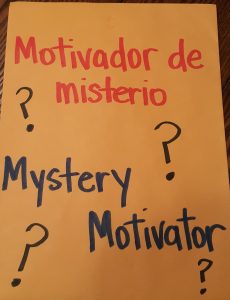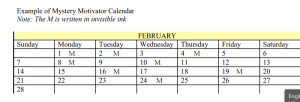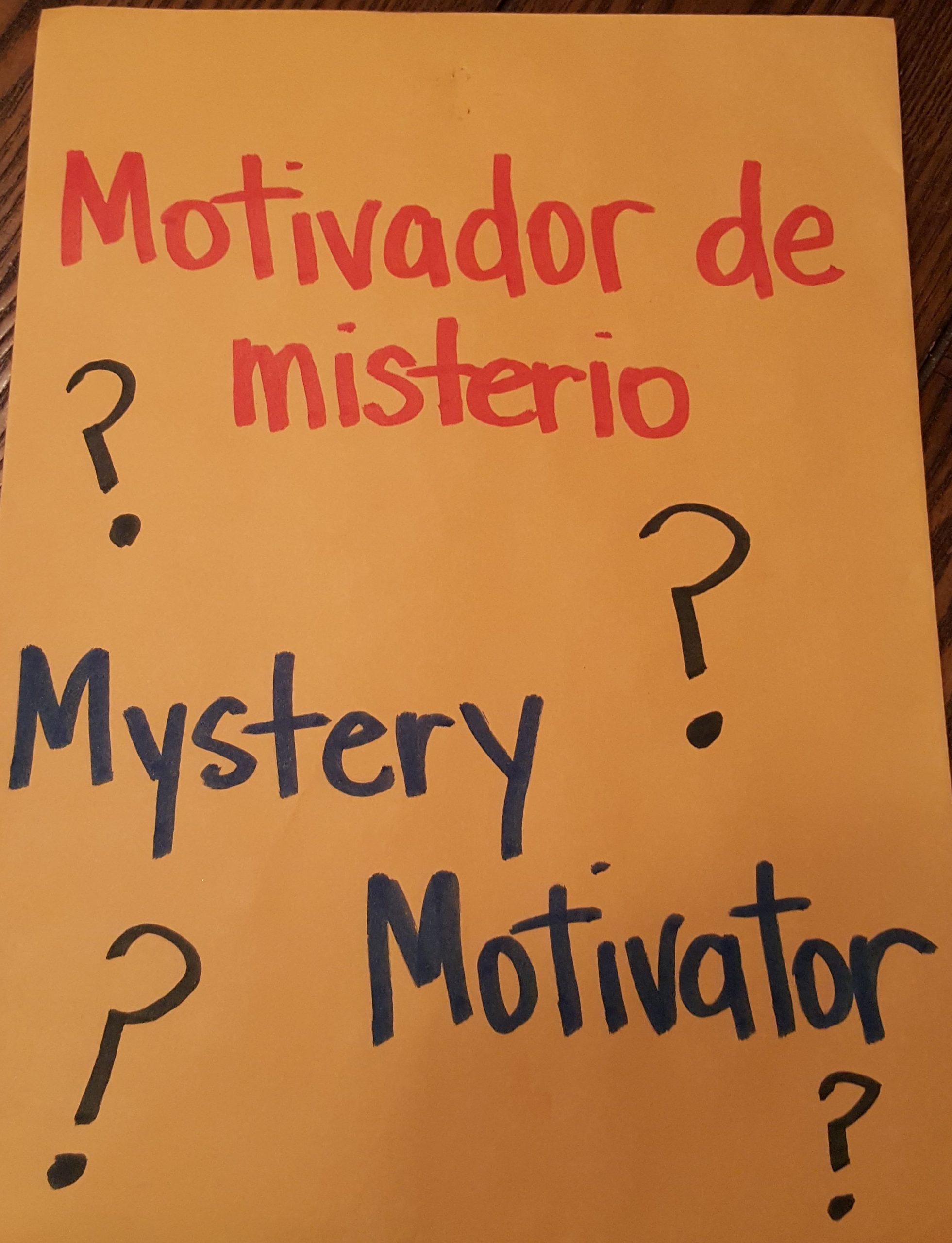Student Contributor: J. Pruneda-Martinez
 Mystery Motivator is a reinforcement strategy that uses anticipation and surprise to motivate students to engage in the desired behavior. This strategy can be implemented with and individual student or the entire class.
Mystery Motivator is a reinforcement strategy that uses anticipation and surprise to motivate students to engage in the desired behavior. This strategy can be implemented with and individual student or the entire class.
Mystery Motivator (MM) is a behavioral intervention that teachers use to assist in managing group and individual student behaviors with the element of surprise. This strategy rewards students for appropriate behaviors, but yet there’re two elements of uncertainty that make this intervention a powerful source of behavioral management. Those elements are whether or not the students engaged in or refrain from the predetermined academic or social behaviors and what rewards will be given when earned. On days, when the class meets its behavior goal, a student gets to color in the day on the Mystery Motivator calendar to see if the invisible X appears if it appears, the reward is earned. It is the teacher’s choice to decide how many days you would like to have an X’s on. When the intervention has shown to be effective in reducing class wide target/problem behaviors, begin fading it out the intervention. It is important that while teachers are fading the strategy, that they keep on consistently acknowledging and praising improved behaviors and that will continue encouraging students to properly behave.
 This intervention was placed in the supportive stage because this is the stage where “teacher’s model and encourage the behaviors they seek to have students emulate, while also supporting students’ efforts to achieve those important behaviors.” Mystery Motivator is an intervention that without a doubt let’s teachers encourage the behaviors that they may want to see be increased or decreased. Additionally, the intervention allows the teacher to support students’ effort of engaging or refraining from the predetermined behaviors by delivering a mystery incentive if students meet behavior goal. In regard to the theories of influence that fit best, the intervention would be for classrooms that are Student Directed, Student Directed & Collaborative, Collaborative, Collaborative & Teacher Directed. This intervention gives students a sense of choice when they come up with incentive ideas, it has some teacher-directing occasions when the teacher explains to the students what is expected, and overall expectancy of the class working together to improve or refrain from different behaviors to receive the mystery motivator. The reason that this intervention does not fit into a teacher-centered classroom is because it gives students choices, and the class has the opportunity to work together collaborate. In a teacher-centered classroom it is literally how it sounds; the teacher is the authoritative figure, and they take charge, leads, and chooses what they would like.
This intervention was placed in the supportive stage because this is the stage where “teacher’s model and encourage the behaviors they seek to have students emulate, while also supporting students’ efforts to achieve those important behaviors.” Mystery Motivator is an intervention that without a doubt let’s teachers encourage the behaviors that they may want to see be increased or decreased. Additionally, the intervention allows the teacher to support students’ effort of engaging or refraining from the predetermined behaviors by delivering a mystery incentive if students meet behavior goal. In regard to the theories of influence that fit best, the intervention would be for classrooms that are Student Directed, Student Directed & Collaborative, Collaborative, Collaborative & Teacher Directed. This intervention gives students a sense of choice when they come up with incentive ideas, it has some teacher-directing occasions when the teacher explains to the students what is expected, and overall expectancy of the class working together to improve or refrain from different behaviors to receive the mystery motivator. The reason that this intervention does not fit into a teacher-centered classroom is because it gives students choices, and the class has the opportunity to work together collaborate. In a teacher-centered classroom it is literally how it sounds; the teacher is the authoritative figure, and they take charge, leads, and chooses what they would like.
More Information –
Tool Source: Mystery Motivator in Special Education – Watson Institute (thewatsoninstitute.org)
https://www.interventioncentral.org


